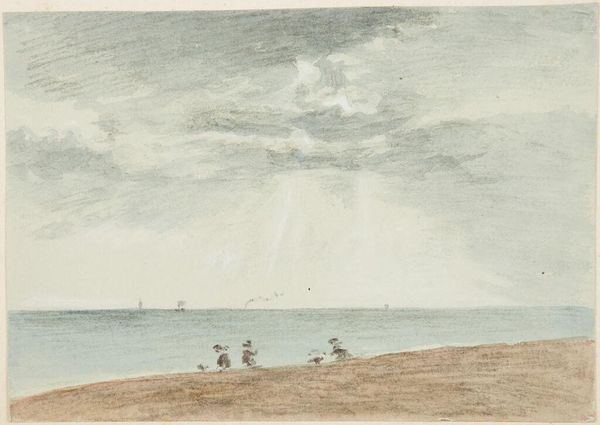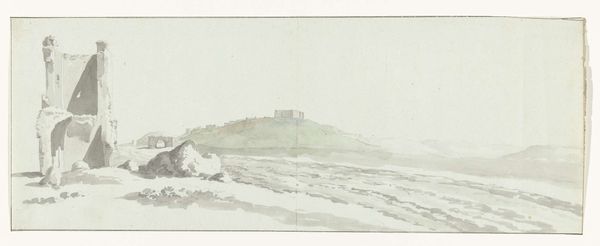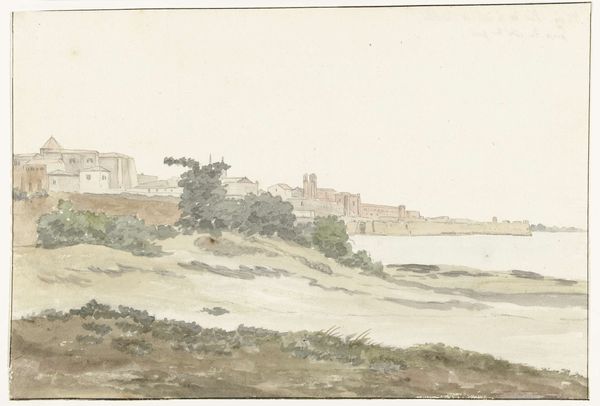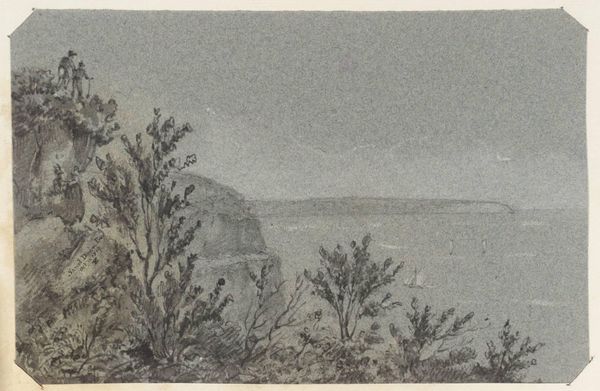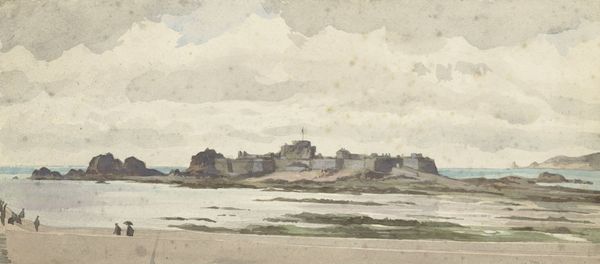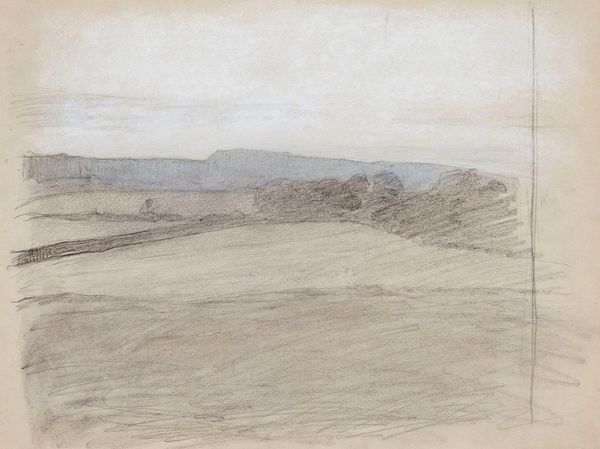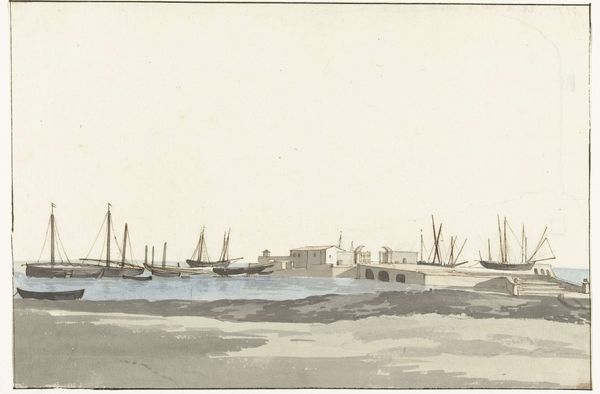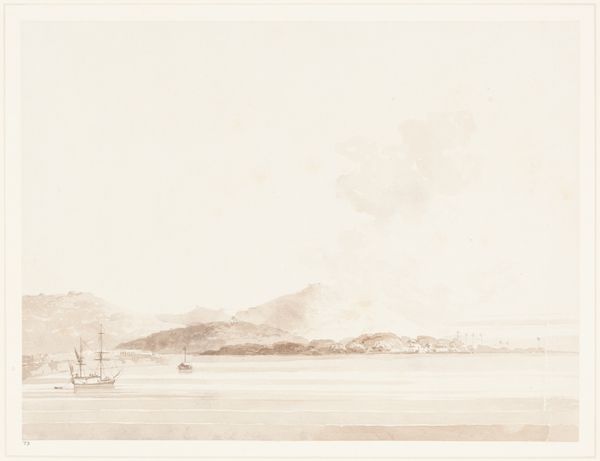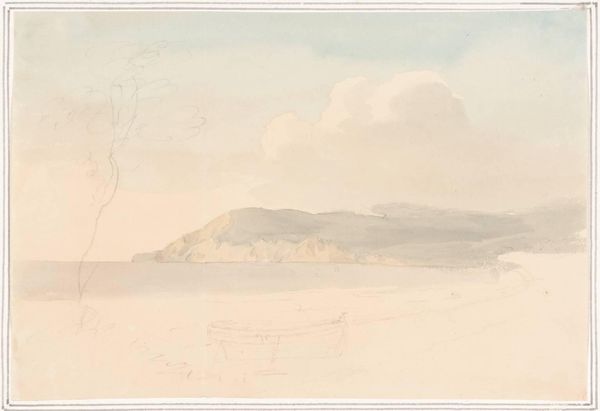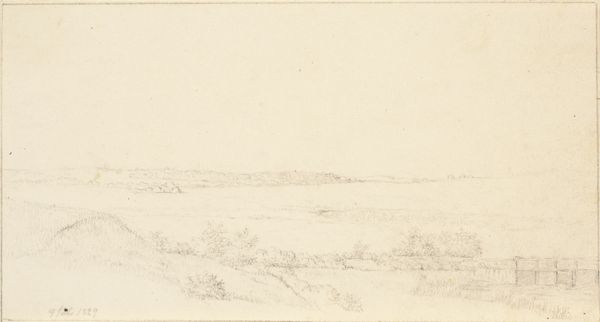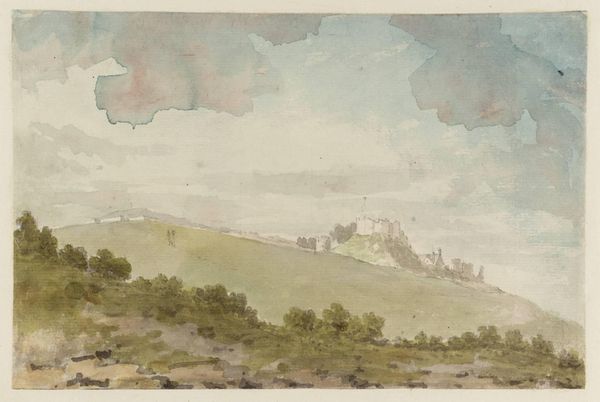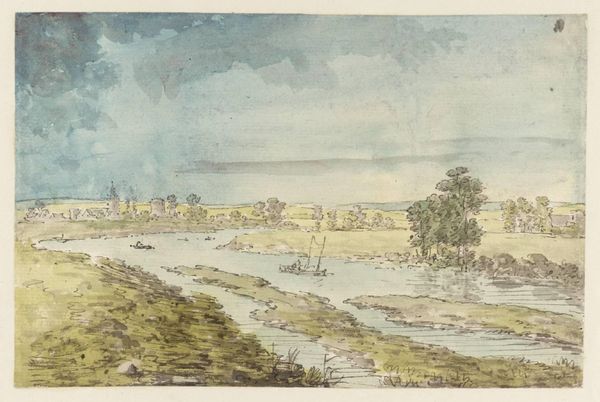
painting, plein-air, watercolor
#
painting
#
plein-air
#
landscape
#
watercolor
#
watercolour illustration
#
watercolor
Dimensions: height 171 mm, width 267 mm
Copyright: Rijks Museum: Open Domain
Curator: Here we have Louis Ducros’s "View of the City of Gallipoli," a watercolour illustration created in 1778, currently held in the Rijksmuseum collection. Editor: It's strangely muted, isn’t it? That hazy quality... almost dreamlike. It feels incredibly distant, not just geographically but temporally as well. A melancholic vision, perhaps? Curator: Watercolors often evoke that ethereal quality, but there's more at play. Ducros was Swiss, not someone from Gallipoli. His journey and representation already imbue it with layers of cultural translation. What symbols or visual languages can you decipher? Editor: Well, the high horizon line emphasizes the vastness of the sky, almost flattening the city into the background. It makes me wonder, who commissioned this view, and what was their agenda? What kind of symbolic claim are they staking to this faraway place? The lack of activity, human figures mostly absent. I'd argue that emptiness carries the ideological weight. Curator: The "emptiness" is precisely the language! It resonates with Enlightenment ideals of the picturesque, but also prefigures Romanticism's fascination with ruins and faraway landscapes. Even now Gallipoli sits at an intersection: where Europe looks east, or perhaps yearns for something "other" or lost. It holds significance for Turkey as well, yet is perceived very differently today due to 20th-century events, namely World War I. Editor: Precisely, art isn’t created in a bubble. That war casts a long shadow over every image from that peninsula for me, so, even earlier images can be read against that backdrop. The image serves a purpose, it is an aesthetic or cultural ambassador. Even the soft wash of the watercolor feels politically loaded! It creates a comfortable distance from a region rife with potential for conflict. Curator: It’s about establishing an ideal then. A tranquil remove… but can we truly divorce images like these from the realities of power and geopolitical significance? Ducros’ watercolour here then presents both aesthetic appeal, but serves as a powerful symbolic space for cultural and political negotiation, across centuries. Editor: Agreed. It makes one reconsider how even seemingly serene landscapes function within broader systems of representation, history, and remembrance. Curator: Indeed, leaving us to further investigate those visual intersections!
Comments
No comments
Be the first to comment and join the conversation on the ultimate creative platform.
